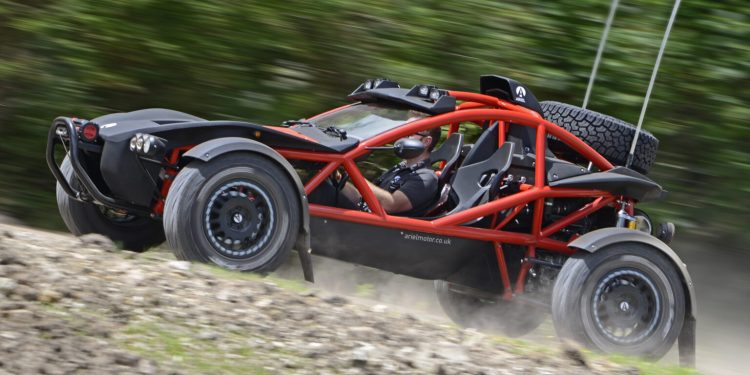Ariel Off-Road E-Nomad is Serious Fun
Words NZ Autocar | Images Aerial, Autocar UK
Ariel has a prototype near-production-ready concept that is essentially an electric version of its recently released Nomad 2 performance off-roader. Both they describe as the Aerial Atom of dune buggies.
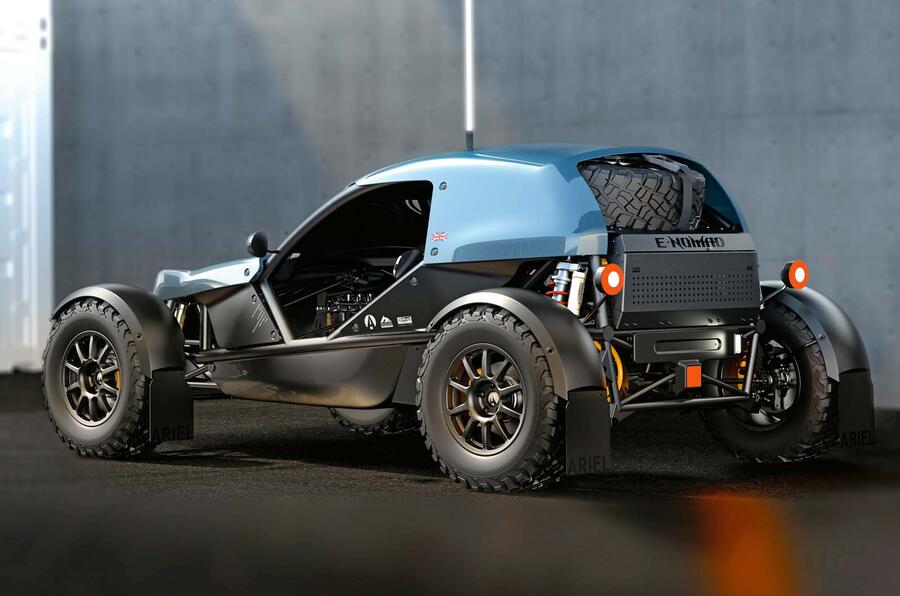
The E-Nomad is evidently as quick as the ICE model and it should launch in 2026. It won’t come cheap, naturally; battery costs will make it roughly $NZ20,000 more expensive than the petrol machine (around $NZ135k).
The Zero-Emissions Lightweight Vehicle, which is backed by a modest government grant, uses a steel space frame chassis and independent suspension, as does the Nomad 2. It too is rear-wheel drive.
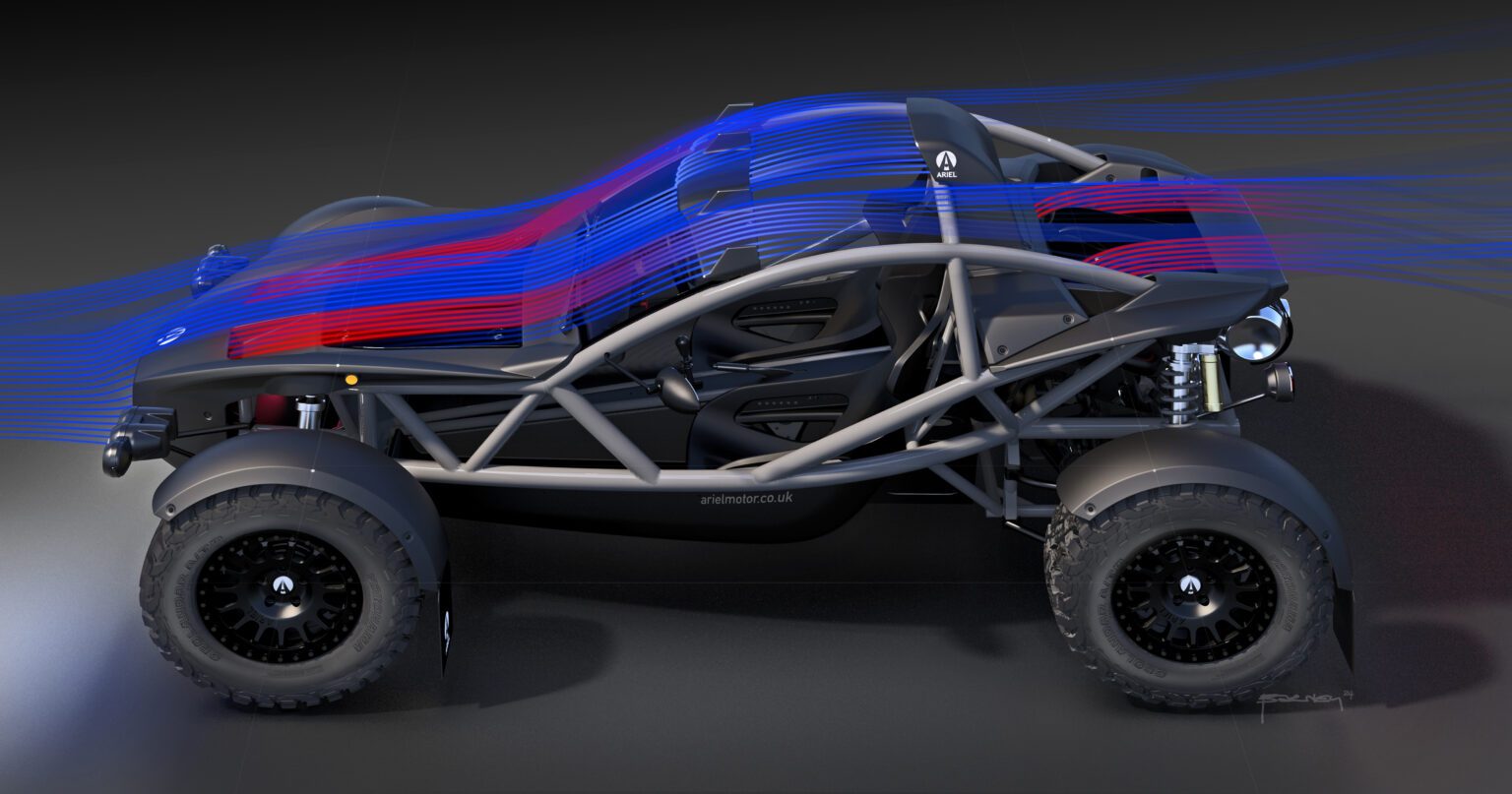
A BorgWarner liquid-cooled single drive motor powers the E-Nomad, delivering 210kW and 489Nm. Ariel says the electric off-roader can hit 96km/h in 3.5sec, on its way to a top speed of 185km/h.
The firm also believes the solid low-rev torque delivery will be an advantage in off-road use. Moreover, the powertrain allows single-pedal driving for it features both regenerative braking and an ABS system. With tweaking Aerial says it could potentially deliver up to 242kW of peak power. The motor, single-speed gearbox and inverter combine in a single unit that mounts just ahead of the rear wheels. It weighs in at just 92kg.
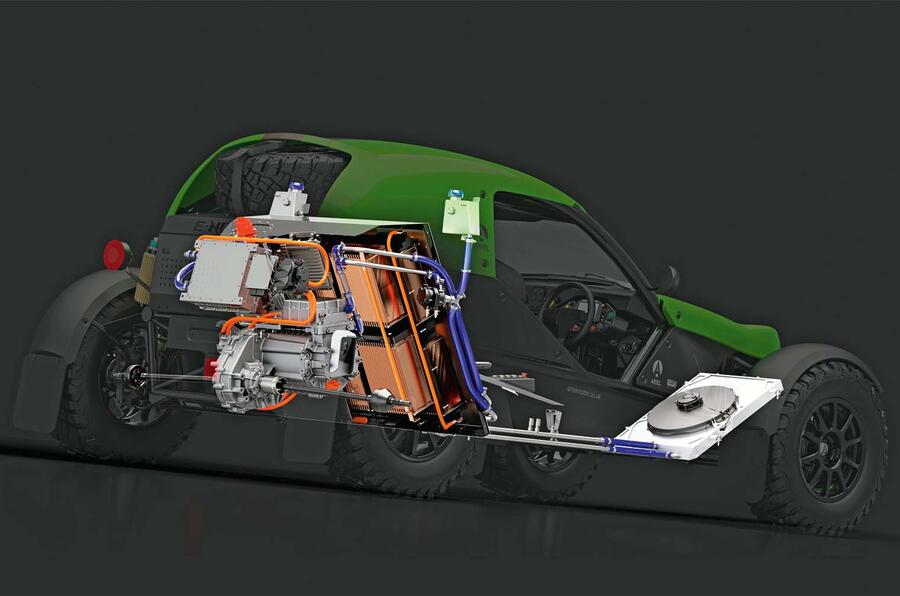
Powering the motor is a 450V battery good for 41kWh and the pack weighs less than 300kg. Its battery pack is sited behind the rear bulkhead to optimise weight distribution and minimise cable runs. There’s a cooling/heating system to cope with peaks of off-road use. The E-Nomad overall tips the scales at a stated 896kg.
Its body is made from a bio-composite, the fibres of which derive from flax plants. Aerial chose this product because of its low CO2 manufacturing process.
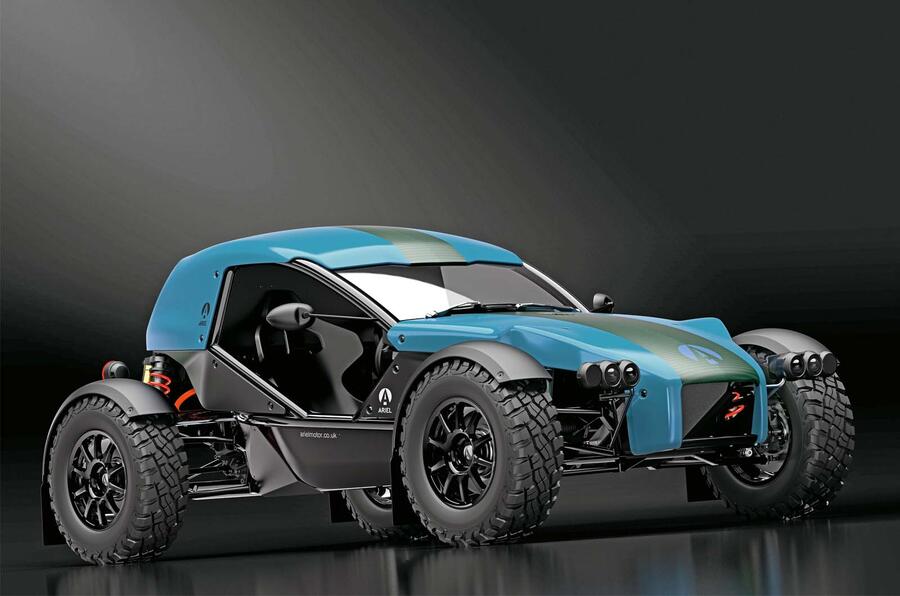
When the E-Nomad goes into production the bodywork will look slightly different because of ongoing aerodynamic studies.
Ariel believes the E-Nomad has a future, offering a different driving experience from the ICE model. “We want the battery car to be able to do things the petrol one can’t, and vice versa” and so “that justifies both” said the company head, Simon Saunders.


